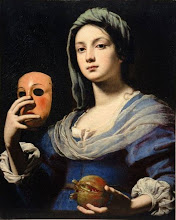There once was a pious rabbi who had a dream in which a voice told him to go to far off Prague, where under the great bridge to the royal castle he would discover a hidden treasure. This same commanding dream was repeated twice.
He finally decided to go, making the long journey by foot. On arriving in Prague he found the bridge; but as there were sentinels posted there day and night, he did not venture to dig. However, day after day he returned and loitered around, unostentatiously trying to study the situation.
Finally, he attracted the attention of one of the guards. "Have you lost anything, my good man?"he asked. The rabbi told him of his dream. The officer laughed and exclaimed, "You poor man, to have worn out a pair of shoes travelling all this way only because of a dream! Why I had a foolish dream once. A voice commanded me to go to Kracow and search for the home of a rabbi Eisik, son of Jekel, where I would find a great treasure buried in a dirty corner behind the stove. Imagine believing is such a dream." and he laughed again.
Rabbi Eisik bowing politely bid the officer farewell. He then hurried back to Kracow. There he dug under the neglected corner behind his stove and found the treasure, thus putting an end to his poverty.
In commenting on this tale, Heinrich Zimmer in The Choice is Always Ours writes:
Now the real treasure, to end our misery and trials, is never far away; it is not to be sought in any distant region, it lies buried in the innermost recesses of our own home, that is to say, our own being. And it lies behind the stove, the life-and-warmth-giving center of the structure of our existence, our heart of hearts - if we could only dig. But there is the odd and persistent fact that it is only after a faithful journey to a distant region, a foreign country, a strange land, that the meaning of the inner voice that is to guide our quest can be revealed to us. And together with this odd and persistent fact there goes another, namely, that the one who reveals to us the meaning of our cryptic message, must be a stranger, of another creed and a foreign race.
The German Indologist, Heinrich Zimmer was one of Carl Jung's few male friends. After Zimmer's death in 1943, the well-known anthropologist Joseph Campbell (another great friend) edited his writings for publication.
Zimmer felt that Western civilisation was at a crossroads; a turning point that had been reached in India around 700 BC: an encounter with the Self of the Universe.
Rembrandt, The Philosopher in Meditation.
A wonderful interpretation of the symbolism behind this painting here.
Rembrandt, The Philosopher in Meditation.
A wonderful interpretation of the symbolism behind this painting here.




















